Members of the Archive/Counter-Archive network spans across Canada and multiple disciplines. Learn more about our research below!
Special issues edited by A/CA members
Lord, Susan and Janine Marchessault, eds. “Against Oblivion: Community Archives, Building Alliances.” Special Issue, PUBLIC: Art/Culture/Ideas 71 (September 2025).
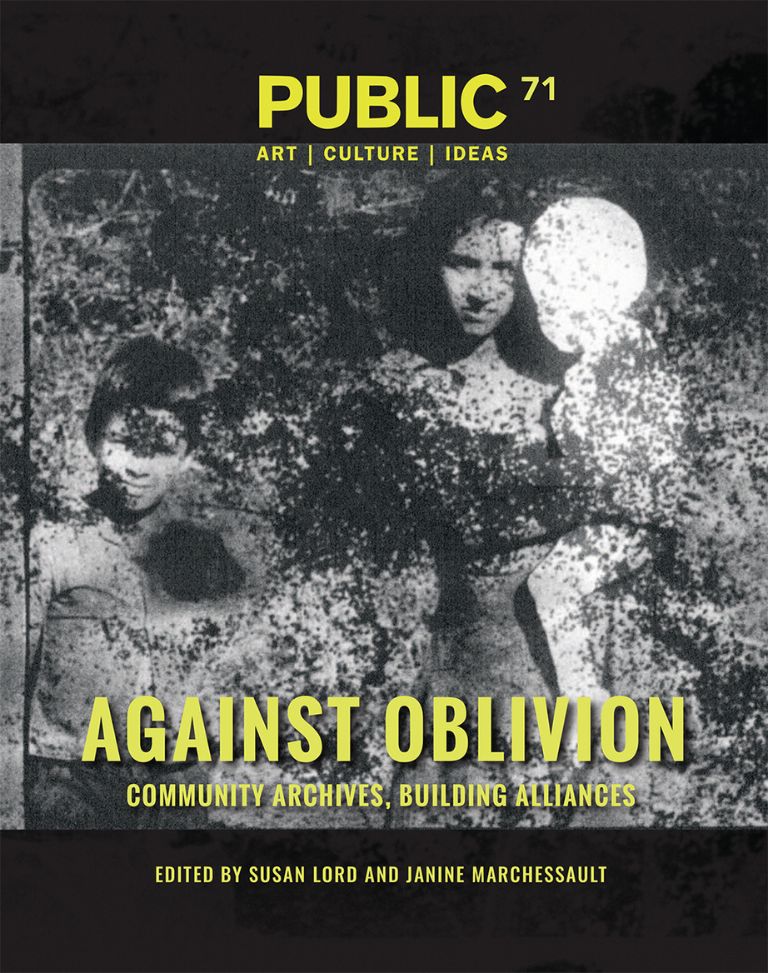
PUBLIC 71: Against Oblivion: Community Archives, Building Alliances, edited by Susan Lord and Janine Marchessault, builds directly on the urgent conversations ignited during the second GAVA conference, co-presented by A/CA, the Eye Filmmuseum, and the Toronto International Film Festival (TIFF) in July 2024. It mobilizes these exchanges into lasting scholarly and artistic contributions, ensuring that the dialogues begun at GAVA continue to circulate, expand, and inform emerging archival practices.
This special issue of PUBLIC brings together artists, archivists, curators, and scholars whose work challenges institutional forgetting and reclaims histories marginalized or threatened by dominant regimes. Through essays, dossiers, case studies, and artistic interventions, contributors mobilize archival practice as resistance, care, and possibility. Through essays, dossiers, case studies, and artistic interventions, this issue highlights practices that deliberately work against oblivion, showcasing how audiovisual archives are being redefined by the communities who steward, use, and activate them.
Marchessault, Janine, May Chew, Susan Lord, eds. “Archive/Counter-Archives.” Special Issue, PUBLIC: Art/Culture/Ideas 57 (Sept. 24, 2018).
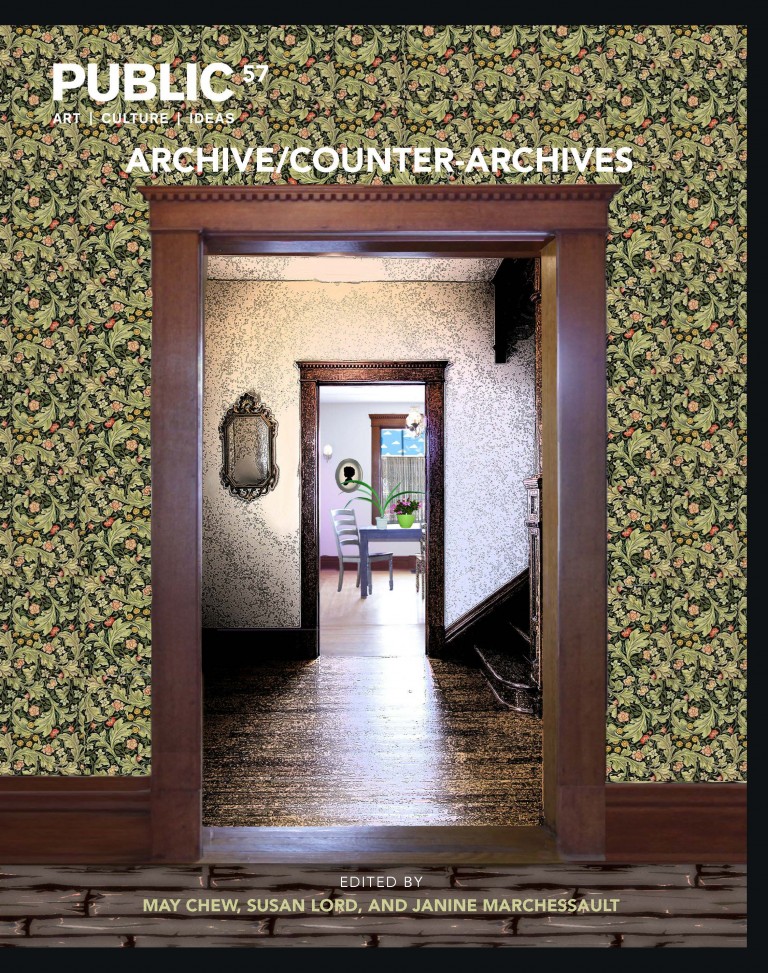
This special issue of Public on ARCHIVE/COUNTER-ARCHIVES advances conversations regarding the changing nature and political realities of audio and visual heritage in the twenty-first century. Bringing together artists, archivists, and researchers, this issue of PUBLIC argues that the re-thinking of audio-visual heritage preservation is ultimately strategic and political, especially given the precarious material conditions of archives in the digital era, and the fact that colonial and racialized forms of structural control over the history of place and belonging continue to embargo access to the past for many communities. This issue thus turns towards the transformative potential of counter-archives, which can be political, ingenious, resistant, and community-based. PUBLIC 57 also brings to the fore the work of women and Indigenous, racialized, diasporic, and LGBT2Q+ communities to create counter-archives that expand, interrogate, and disrupt conventional archives and archival methodologies.
Earnest, Jarrett, ed. “DEVOTION – Today’s Future Becomes Tomorrow’s Archive.” Special Issue, PUBLIC: Art/Culture/Ideas 65 (2022).
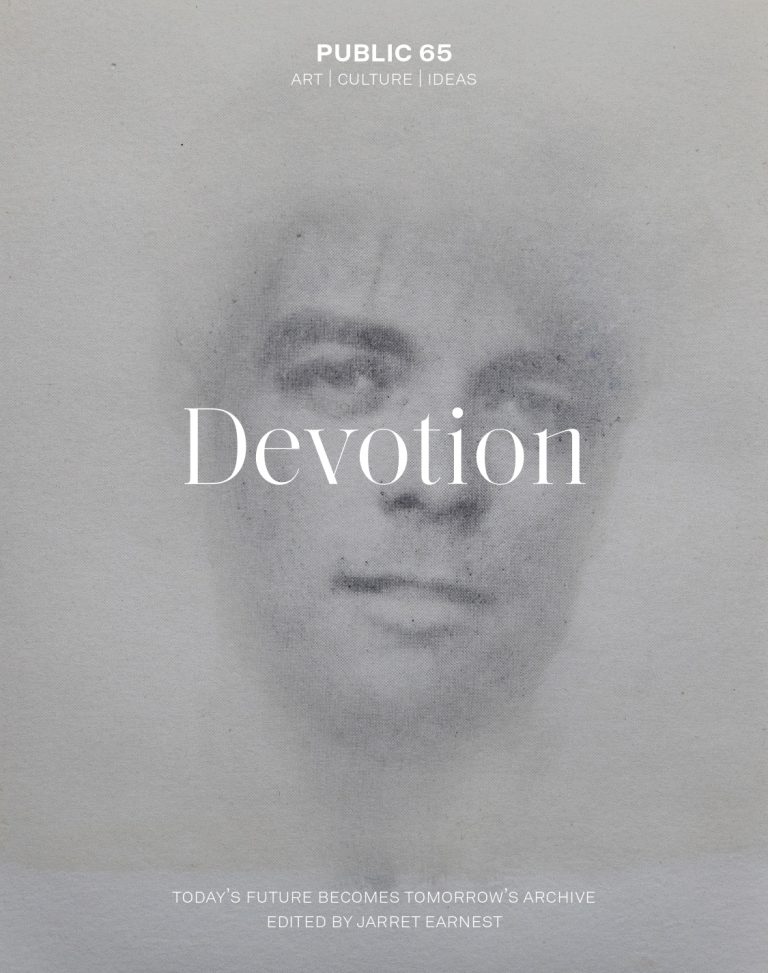
Guest edited by JARRETT EARNEST, PUBLIC 65: DEVOTION – Today’s Future Becomes Tomorrow’s Archive contains essays, interviews, reflections, oral histories, reproductions of notes, diagrams, works of art, photographs, and rare ephemera representing excluded and omitted LGBTQ2S+ archival material. Queer people have had to create and maintain archives as alternate repositories due to systematic exclusion from traditional archival practices and institutions. Propelled by the editor’s meticulous practice of collecting, explorations of experimental living practices, and embodied materiality—this issue of PUBLIC is a beautifully designed, radical collection of overlooked and forgotten IBPOC and LGBTQ2S+ archives.
PUBLIC 65: DEVOTION – Today’s Future Becomes Tomorrow’s Archive is 335 pages in length, designed by Hahn Studio, full-colour, with cover artwork by STEPHEN ANDREWS.
This issue of PUBLIC features several A/CA contributors.
Hennefeld, Maggie, Laura Horak eds. “Curating Feminist Film Archives.” Special Issue, Feminist Media Histories 10, no. 2-3 (2024).

Guest edited by Maggie Hennefeld and Laura Horak, this special issue of Feminist Media Histories explores the theme of curating feminist film, emphasizing its importance in showcasing diverse voices and perspectives. It delves into the challenges and innovations in curatorial practices within the feminist film sphere, highlighting the role of curators in shaping narratives and promoting inclusivity. Through various case studies and discussions, the issue addresses issues such as representation, cultural contexts, and the impact of digital platforms on curatorial efforts, underscoring the ongoing relevance of feminist film curation in challenging stereotypes, fostering dialogue, and advancing social change. It invites readers to engage critically with the ways in which feminist films are curated, exhibited, and consumed, pointing towards future directions in feminist media studies and activism.
Books written/edited by A/CA members
Burke, Andrew. Hinterland Remixed: Memory, Nostalgia, and the Canadian 1970s. McGill-Queen’s University Press, 2019.
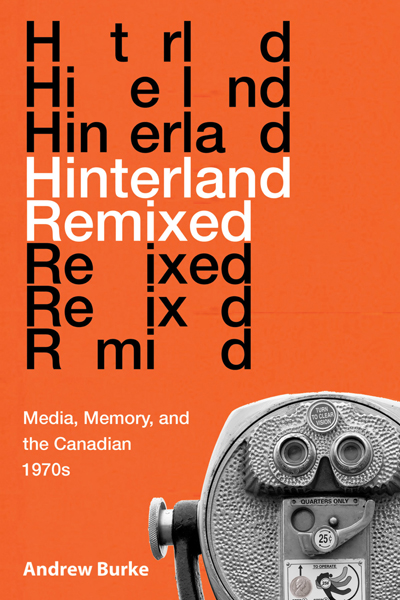
Like the flute melody from Hinterland Who's Who, the 1970s haunt Canadian cultural memory. Though the decade often feels lost to history, Hinterland Remixed focuses on boldly innovative works as well as popular film, television, and music to show that Canada never fully left the 1970s behind.
Andrew Burke reveals how contemporary artists and filmmakers have revisited the era's cinematic and televisual residues to uncover what has been lost over the years. Investigating how the traces of an analogue past circulate in a digital age, Burke digs through the remnants of 1970s Canadiana and examines key audiovisual works from this overlooked decade, uncovering the period's aspirations, desires, fears, and anxieties. He then looks to contemporary projects that remix, remediate, and reanimate the period. Exploring an idiosyncratic selection of works - from Michael Snow's experimental landscape film La Région Centrale, to SCTV's satirical skewering of network television, to L'Atelier national du Manitoba's video lament for the Winnipeg Jets - this book asks key questions about nation, nostalgia, media, and memory.
A timely intervention, Hinterland Remixed demands we recognize the ways in which the unrealized cultural ambitions and unresolved anxieties of a previous decade continue to resonate in our current lives.
Claxton, Dana, and Ezra Winton. Indigenous Media Arts in Canada Making, Caring, Sharing. Wilfred-Laurier University Press, 2023.
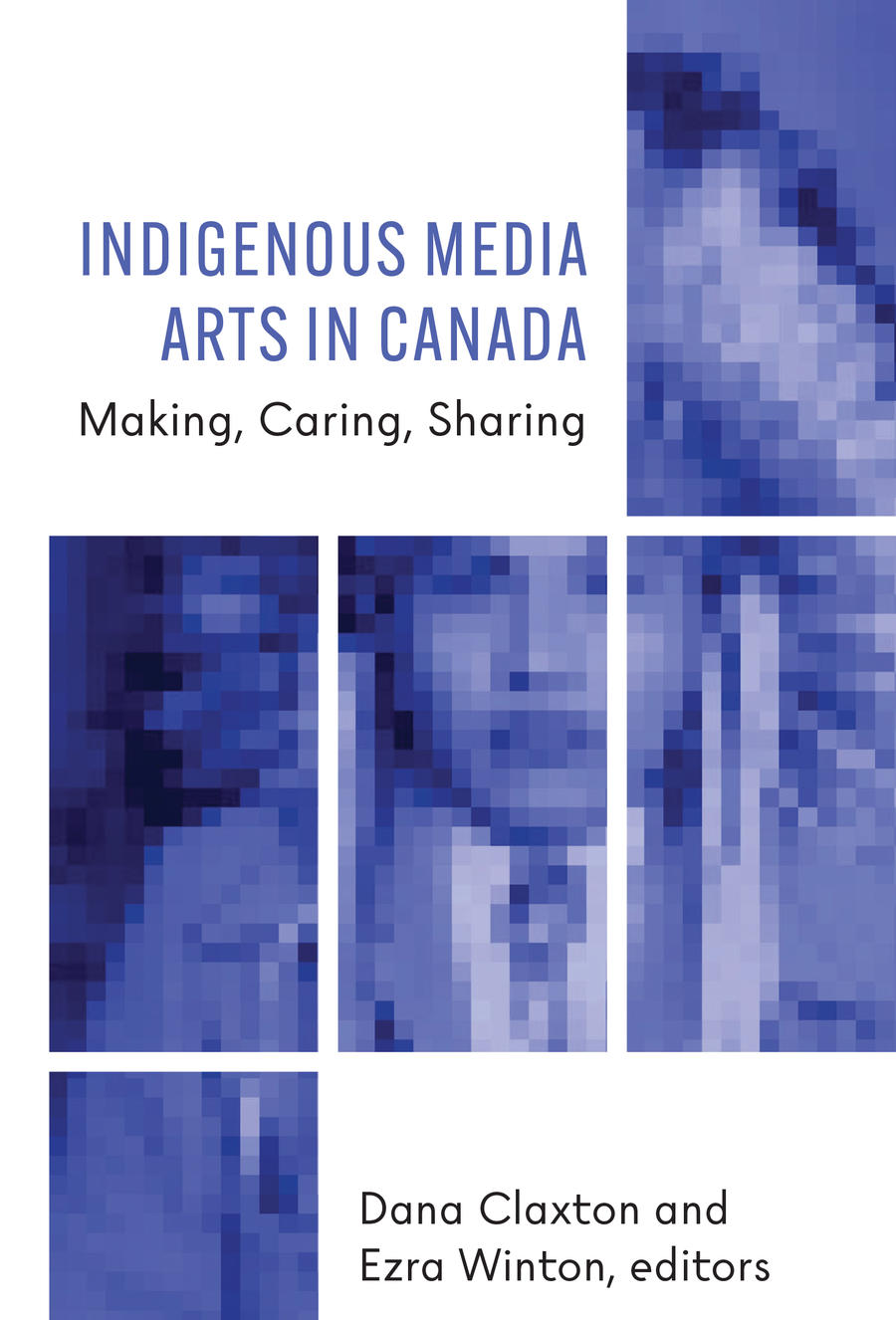
Indigenous and settler scholars and media artists discuss and analyze crucial questions of narrative sovereignty, cultural identity, cultural resistance, and decolonizing creative practices.
Humans are narrative creatures, and since the dawn of our existence we have shared stories. Storytelling is what connects us, what helps us give shape and understanding to the world and to each other. Who tells whose stories in which particular ways leads to questions of belonging, power, relationality, community and identity. This collection explores those issues with a focus on settler-Indigenous cultural politics in the country known as Canada, looking in particular at Indigenous representation in media arts. Chapters feature roundtable discussions, interviews, film analyses, resurgent media explorations, visual culture advocacy and place-based practices of creative expression.
Eclectic in scope and diverse in perspective, Indigenous Media Arts in Canada is unified by an ethic of conciliation, collaboration, and cultural resistance. Engaging deftly and thoughtfully with instances of cultural appropriation as well as the oppressive structures that seek to erode narrative sovereignty, this collection shines as a crucial gathering of thoughtful critique, cultural kinship, and creative counterpower.
Includes chapters written by the following A/CA members: Claudia Sicondolfo, Karine Bertrand, Julie Nagam, Carla Taunton, and Brenda Longfellow.
Conrad, Ryan ed. Toronto Living With AIDS. Wilfred-Laurier University Press, 2024.

This publication investigates an extraordinary moment in the histories of both activist media and AIDS activism: the creation of a community-driven video series about HIV/AIDS for public-access cable television in Toronto at the beginning of the 1990s. Researcher Ryan Conrad has done detailed historical work on the Toronto Living With AIDS series, its creators, public reception, circulation, and censorship by Rogers Cable. The book includes interviews with Debbie Douglas, Richard Fung, John Greyson, Colman Jones, Glace Lawrence, James MacSwain, Ted Myerscough, Ian Rashid, Kaspar Saxena, and Darien Taylor; and contemporary reflections on these seminal videos by Chase Joynt, Alison Duke, Andil Gosine, Peter Knegt, Kiera Boult, Kristin Li, Alexander McClelland, Mikki Burino, Jamie Whitecrow, Jon Davies, and Jessica Whitbread.
Toronto Living With AIDS is published by PUBLIC Books and distributed by Wilfrid Laurier University Press
Purchase this book on the Wilfred Laurier University Press website.
Damiens, Antoine. LGBTQ Film Festivals: Curating Queerness. Amsterdam: Amsterdam University Press, 2020.
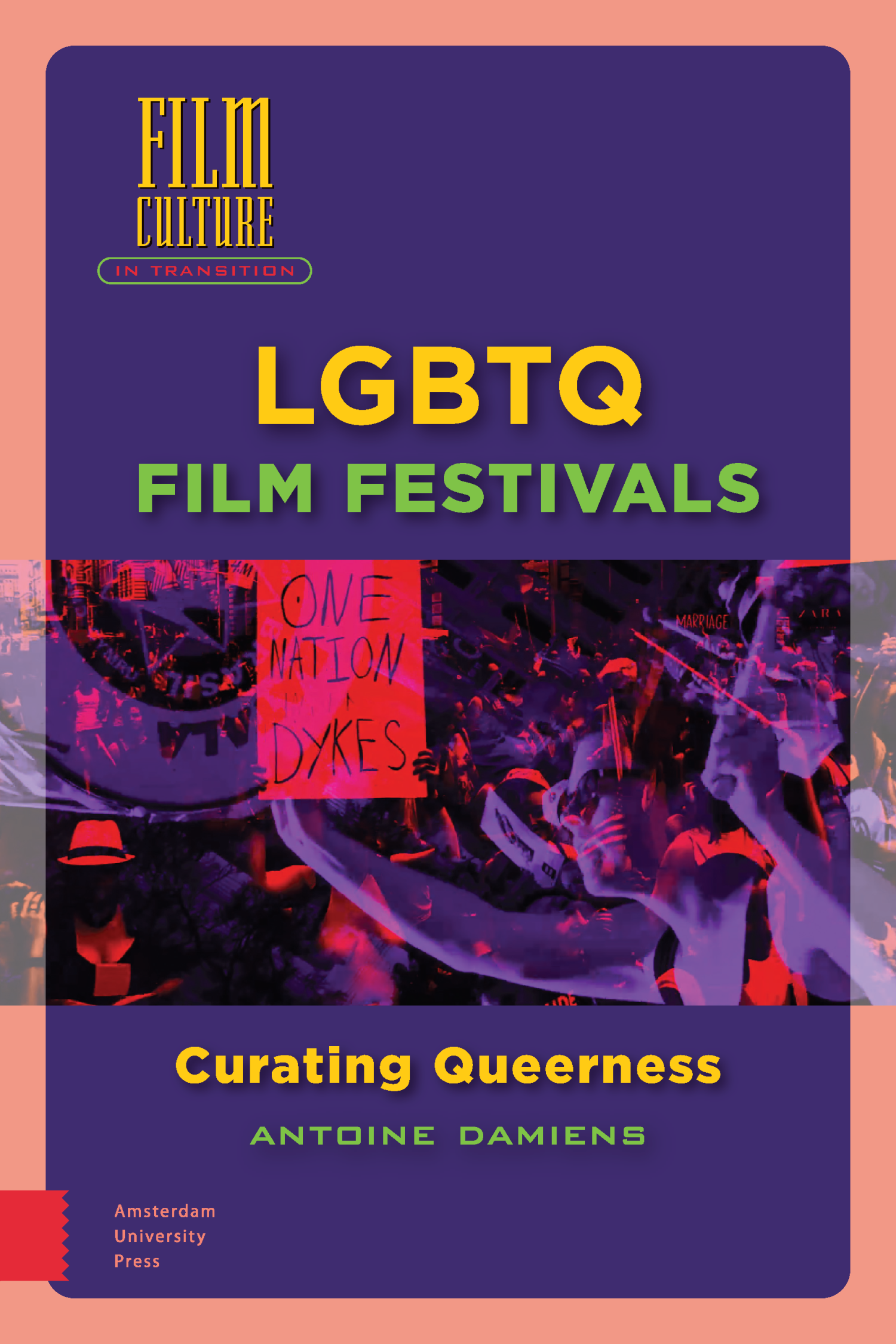
While scholars have theorized major film festivals, they have ignored smaller, ephemeral, events. In taking seriously minor European and North-American LGBTQ festivals which often only exist as traces within archival collections, this book revisits festival studies' methodological and theoretical apparatuses. As the first 'critique' of festival studies from within, LGBTQ Film Festivals argues that both festivals and queer film cultures are by definition ephemeral. The book is organized around two concepts: First, 'critical festival studies' examines the political project and disciplinary assumptions that structure festival research. Second, 'the festival as a method' pays attention to festivals' role as producers of knowledge: it argues that festivals are not mere objects of research but also actors already shaping academic, industrial, and popular cinematic knowledge. Drawing on the author's experience on the festival circuit, this book pays homage to the labour of queer organizers, critics, and scholars and opens up new avenues for festival research.
De Valck, Marijke and Antoine Damiens, eds. Rethinking Film Festivals in the Pandemic Era and After. New York: Palgrave Macmillan, 2023.
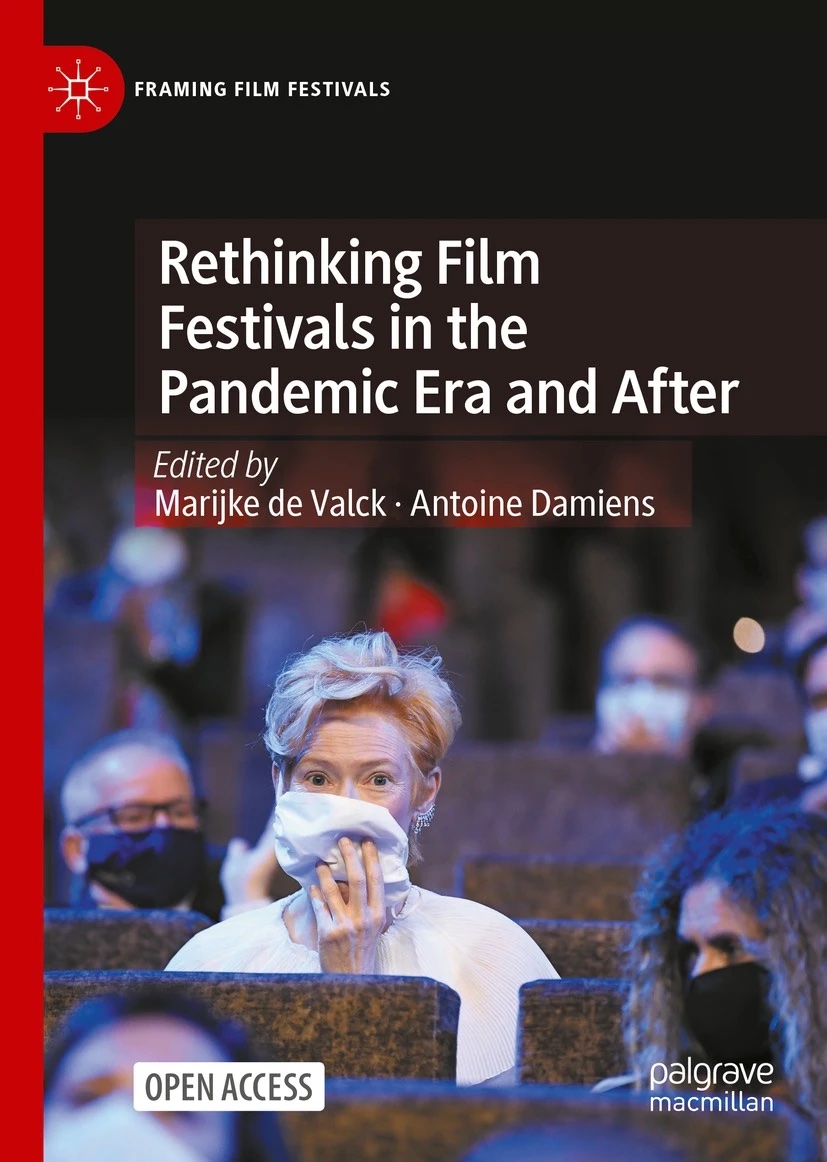
This is an open access book. This edited collection aims to document the effects of Covid-19 on film festivals and to theorize film festivals in the age of social distancing. To some extent, this crisis begs us to consider what happens when festivals can’t happen; while films have found new (temporary) channels of distribution (most often in the forms of digital releases), the festival format appears particularly vulnerable in pandemic times. Imperfect measures, such as the move to a digital format, cannot recapture the communal experience at the very core of festivals. Given the global nature of the pandemic and the diversity of the festival phenomenon, this book features a wide range of case studies and analytical frameworks. With contributors including established scholars and frontline festival workers, the book is conceived as both a theoretical endeavour and a practical exploration of festival organizing in pandemic times.
Gagnon, Jean. Vidéocaméléon: Chroniques de l'art vidéo au Québec, de Vidéo Véhicule à PRIM vidéo, 1972-1992. Montreal: Somme Toute, 2021.
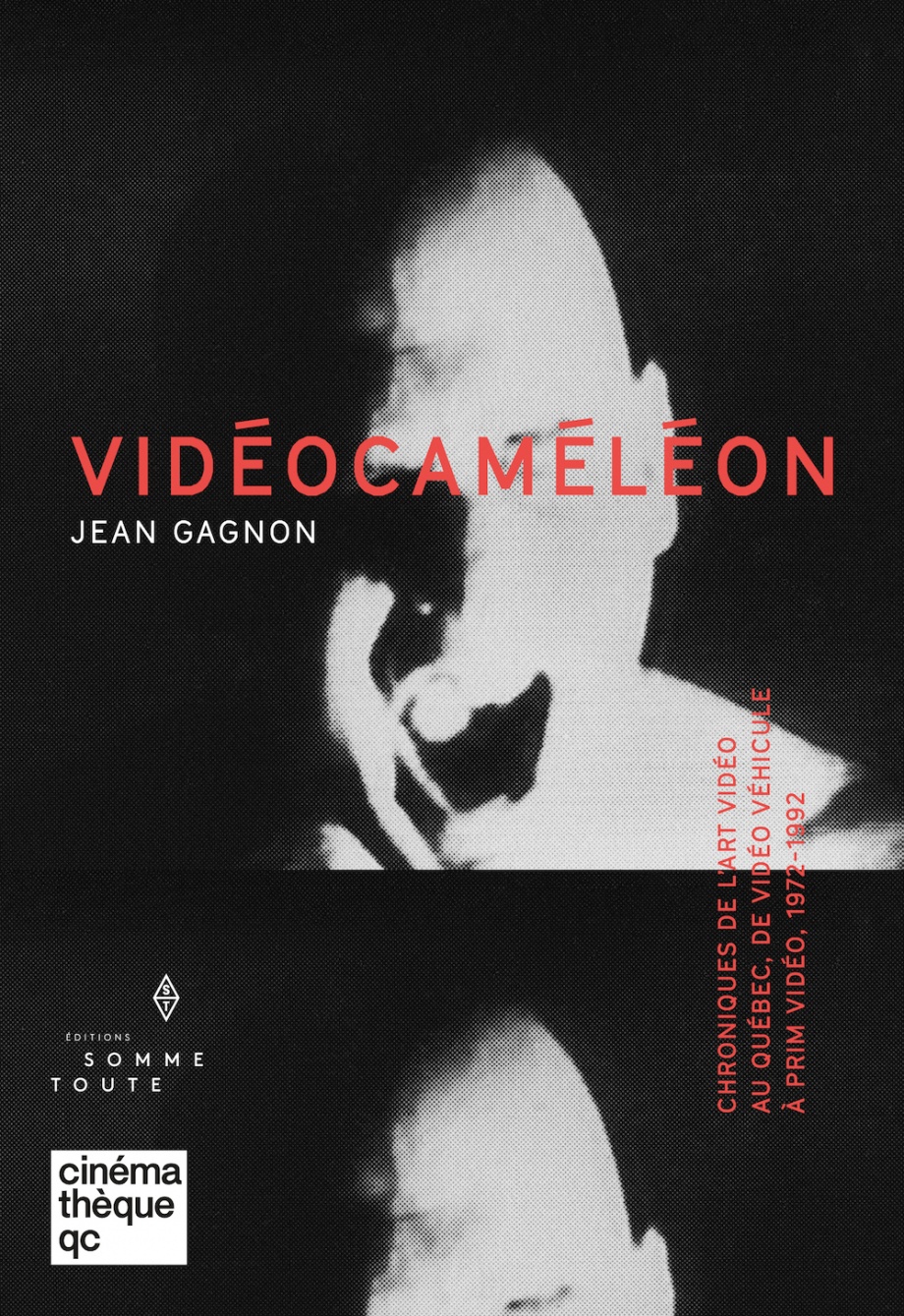
Qu’aura été l’art vidéo ? Telle est la question qui sous-tend ce livre. Et au-delà de la réponse formelle ou définitive qu’on pourrait lui adresser, cette dernière signale qu’un bilan reste à faire et que « l’existence » de cet art demeure (aussi) une question. Jean Gagnon propose ici une chronique de l’art vidéo de 1972 à 1992, sans l’ambition de tout expliquer ni même d’être impartial. Fruit de recherches poussées, notamment à partir du fonds PRIM Vidéo, et d’une collaboration avec la Cinémathèque québécoise, Vidéocaméléon est le premier ouvrage québécois à s’intéresser d’aussi près à l’histoire de cet art.
Gagnon, Monika K. and Lesley Johnstone, eds. In Search of Expo 67. Montreal: McGill Queen's University Press, 2020.
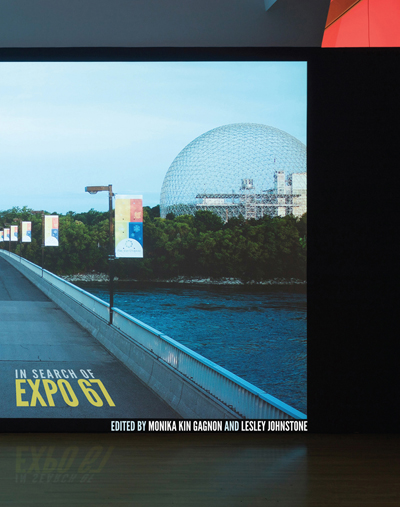
Though Expo 67 looms large in our collective memory, it is often remembered nostalgically as a remote historical event. The conditions that made Expo an exceptional cultural moment are often forgotten: remarkable creative freedom was granted to artists, architects, filmmakers, and designers to experiment with technology and new forms, resulting in an incredible diversity of cultural production.
Originating with the Musée d'art contemporain's 2017 exhibition, In Search of Expo 67 brings together original work from nineteen artists and new critical essays to explore the connections between archives and memory. Organized thematically, artists' words and works are put into dialogue with archival imagery that reconstructs key aspects of the original event. Works by Marie-Claire Blais and Pascal Grandmaison as well as Cheryl Sim explore the physicality of the artificially constructed Expo islands while texts and images rethink and remember key locales such as the Canada and Indians of Canada Pavilions. Expo influenced ideas about Indigenous Canadians at home and abroad at the advent of a new political and cultural conceptualization of Indigeneity: Duane Linklater's art reimagines Norval Morrisseau's seminal Expo mural Earth Mother and Her Children, while Krista Belle Stewart reconstructs a single frame of a short NFB documentary about Indigenous life in vinyl over a "classic colonial grid" of sixteen window panes. Artworks employ contemporary digital media and tools to explore key elements and experiences of particular pavilions. Janine Marchessault provides a history of film at Expo and its archival difficulties. The book also documents six original multi-screen large-format films from Expo 67. Contemporary work in film by Jacqueline Hoàng Nguyen, Geronimo Inutiq, and Philip Hoffman and Eva Kolcze interrogates the official memory and narratives of Expo 67. The result is a critical rethinking and creative reimagining of Expo that shows how vital it remains over fifty years after it occurred, and the role of both research and creation in questioning and sustaining cultural memory.
Long, Paul and Beth Johnson, Shana MacDonald, Schem Rogerson Bader, Tim Wall, eds. Media Studies: Texts, Production, Context. New York, NY: Routledge, 2021.
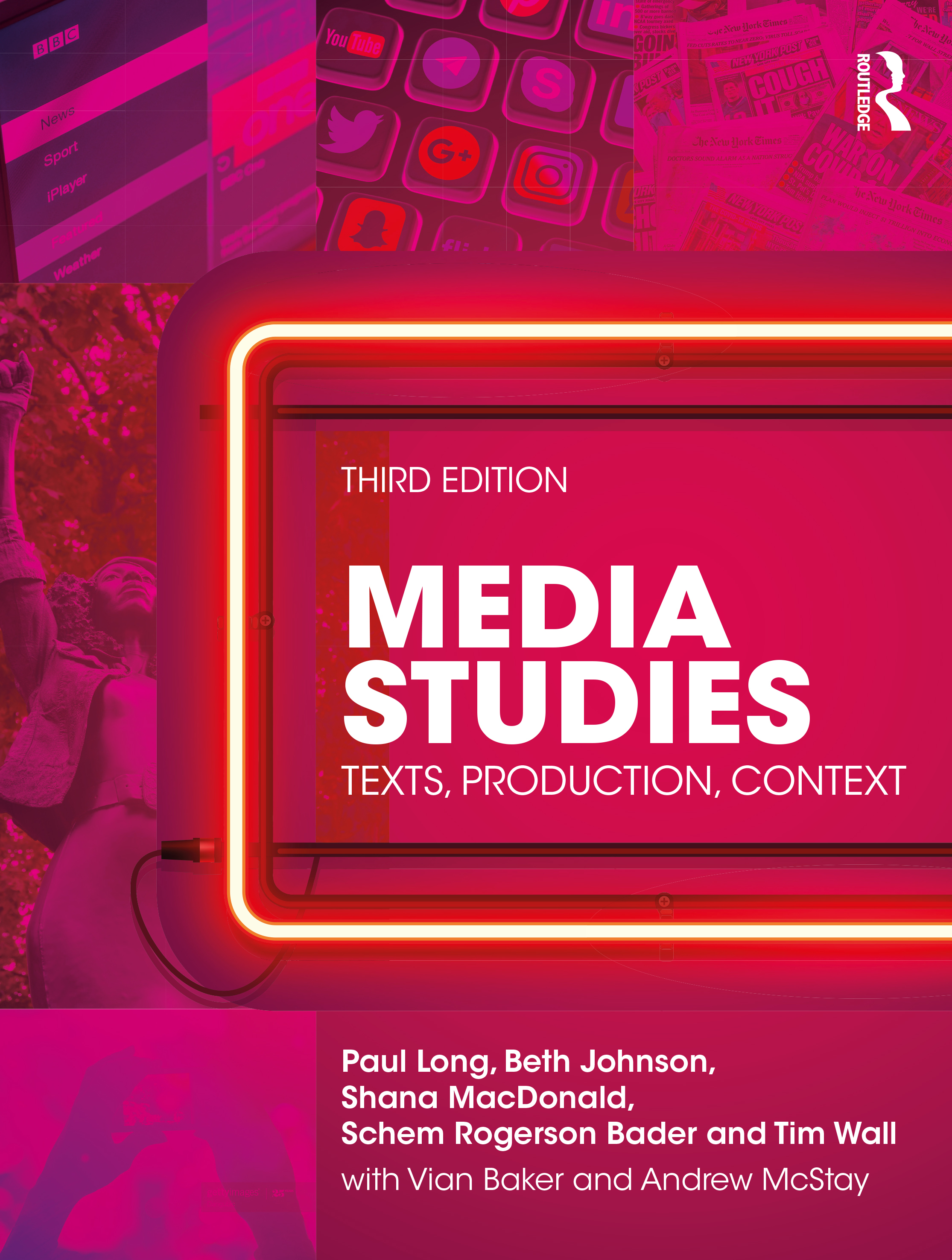
This thoroughly revised and updated third edition provides a comprehensive introduction to the various approaches to the field, explaining why media messages matter, how media businesses prosper and why media is integral to defining contemporary life.
The text is divided into three parts – Media texts and meanings; Producing media; and Media and social contexts – exploring the ways in which various media forms make meaning; are produced and regulated; and how society, culture and history are defined by such forms. Encouraging students to actively engage in media research and analysis, each chapter seeks to guide readers through key questions and ideas in order to empower them to develop their own scholarship, expertise and investigations of the media worlds in which we live. Fully updated to reflect the contemporary media environment, the third edition includes new case studies covering topics such as Brexit, podcasts, Love Island, Captain Marvel, Black Lives Matter, Netflix, data politics, the Kardashians, President Trump, ‘fake news’, the post-Covid world and perspectives on global media forms.
This is an essential introduction for undergraduate and postgraduate students of media studies, cultural studies, communication studies, film studies, the sociology of the media and popular culture.
Lord, Susan and María Caridad Cumaná, eds. The Cinema of Sara Gómez: Reframing Revolution. Indiana University Press, 2021.
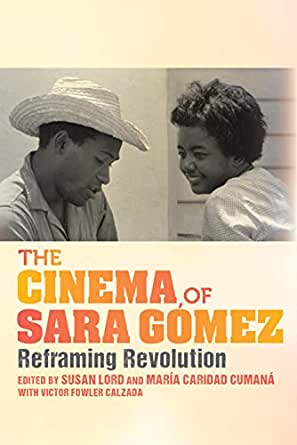
Throughout the 1960s until her untimely death in 1974, Afro-Cuban filmmaker Sara Gómez engaged directly and courageously with the social, political, economic, and cultural transformations promised by the Cuban Revolution.
Gómez directed numerous documentary films in 10 prolific years. She also made De cierta manera (One way or another), her only feature-length film. Her films navigate complex experiences of social class, race, and gender by reframing revolutionary citizenship, cultural memory, and political value. Not only have her inventive strategies become foundational to new Cuban cinema and feminist film culture, but they also continue to inspire media artists today who deal with issues of identity and difference. The Cinema of Sara Gómez assembles history, criticism, biography, methodology, and theory of Gómez's work in scholarly writing; interviews with friends and collaborators; the film script of De cierta manera; and a detailed and complete filmography.
Featuring striking images, this anthology reorients how we tell Cuban cinema history and how we think about the intersections of race, gender, and revolution. By addressing Gómez's entire body of work, The Cinema of Sara Gómez unpacks her complex life and gives weight to her groundbreaking cinema.
Marchessault, Janine & Scott MacKenzie (eds). Process Cinema: Handmade Film in the Digital Age. Toronto: McGill-Queen's University Press, 2019.
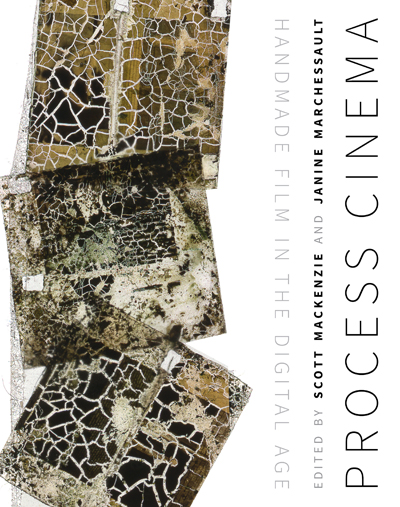
Handmade films stretch back to cinema's beginnings, yet until now their rich history has been neglected. Process Cinema is the first book to trace the development of handmade and hand-processed film in its historical and contemporary contexts, and from a global perspective.
Mapping the genealogy of handmade film, and uncovering confluences, influences, and interstices between various international movements, sites, and practices, Process Cinema positions the resurgence of handmade and process cinema as a counter-practice to the rise of digital filmmaking. This volume brings together a range of renowned academics and artists to examine contemporary artisanal films, DIY labs, and filmmakers typically left out of the avant-garde canon, addressing the convergence between the analog and the digital in contemporary process cinema. Contributors investigate the history of process cinema - unscripted, improvisatory manipulation of the physicality of film - with chapters on pioneering filmmakers such as Len Lye and Marie Menken, while others discuss an international array of collectives devoted to processing films in artist-run labs from South Korea to Finland, Australia to Austria, and Greenland to Morocco, along with historical and contemporary practices in Canada and the United States.
Addressing the turn to a new, sustainable creative ecology that is central to handmade films in the twenty-first century, and that defines today's reinvigorated film cultures, Process Cinema features some of the most beautiful handcrafted films and the most forward-thinking filmmakers within a global context.
Marchessault, Janine & Will Straw (eds). Oxford Guide to Canadian Cinema. London: Oxford University Press, 2019.
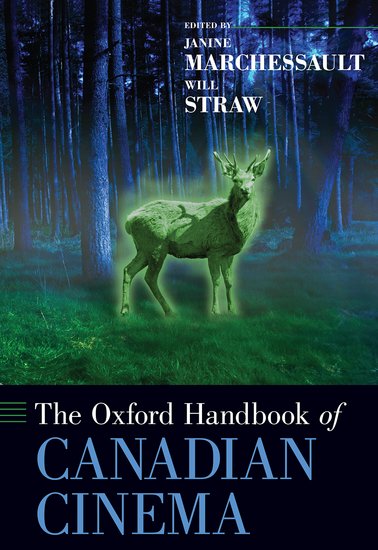
The chapters in The Oxford Handbook of Canadian Cinema present a rich, diverse overview of Canadian cinema. Responding to the latest developments in Canadian film studies, this volume takes into account the variety of artistic voices, media technologies, and places which have marked cinema in Canada throughout its history. Drawing on a range of established and emerging scholars from a range of disciplines, this volume will be useful to teachers, scholars, and to a general readership interested in cinema in Canada. Moving beyond the director-focused approach of much previous scholarship, this book is concerned with communities, institutions, and audiences for Canadian cinema at both national and international levels. The choice of subjects covered ranges from popular, genre cinema to the most experimental of artistic interventions. Canadian cinema is seen in its interaction with other forms of art-making and media production in Canada and at the international level. Particular attention has been paid to the work of Indigenous filmmakers, members of diasporic communities and feminist and LGBTQ artists. The result is a book attentive to the complex social and institutional contexts in which Canadian cinema is made and consumed.
McKinney, Cait. Information Activism: A Queer History of Lesbian Media Technologies. Durham: Duke University Press, 2020.

For decades, lesbian feminists across the United States and Canada have created information to build movements and survive in a world that doesn't want them. In Information Activism Cait McKinney traces how these women developed communication networks, databases, and digital archives that formed the foundation for their work. Often learning on the fly and using everything from index cards to computers, these activists brought people and their visions of justice together to organize, store, and provide access to information. Focusing on the transition from paper to digital-based archival techniques from the 1970s to the present, McKinney shows how media technologies animate the collective and unspectacular labor that sustains social movements, including their antiracist and trans-inclusive endeavors. By bringing sexuality studies to bear on media history, McKinney demonstrates how groups with precarious access to control over information create their own innovative and resourceful techniques for generating and sharing knowledge.
McKinney Cait, & Allyson Mitchell. Inside Killjoy’s Kastle: Dykey Ghosts, Feminist Monsters, and Other Lesbian Hauntings. Vancouver: UBC Press, 2019.

Hundreds of years of ridicule, persecution, erasure, misunderstanding, and institutionalization could put anyone in a bad mood. Killjoy invites you into her kastle for a queer exorcism and celebration of the past.
Lesbian feminist histories can have a haunting effect on the present. This book explores the making and experience of Killjoy’s Kastle: A Lesbian Feminist Haunted House, an immersive walk-through installation and performance artwork (by Allyson Mitchell and Deirdre Logue) that materializes the frightfully acrimonious past for today. Inspired by Evangelical Christian hell houses, the exhibition has been staged in four cities so far – Toronto, London, Los Angeles, and Philadelphia – inviting visitors to interact with humorous and frightening manifestations of the spirits that haunt feminist and queer history.
Whereas traditional hell houses set out to scare and convert, Killjoy’s Kastle cheekily aims to provoke and pervert. The humorous and costumed characters in the kastle – including polyamorous vampiric grannies, a demented women's studies professor, and lesbian zombie folksingers – give expression to old and new anxieties, creating a space for critique, affect, and discussion. Inside Killjoy’s Kastle fills this space by exploring the kastle’s theoretical and political legacies in chapters by queer and feminist scholars and in vignettes by artists who participated in the project. The many colourful photos in the book also bring Killjoy’s Kastle to life, offering an important visual context.
Taking the kastle as a starting point, the contributors to this volume consider the role of lesbian feminist histories and direct-action aesthetics in contemporary queer and feminist communities, particularly the ways in which political artwork can produce new ways of knowing about the past.
This book will appeal to audiences of queer and feminist art; scholars and students of gender, women’s, and sexuality studies, queer theory, art criticism, and performance studies; queer and feminist cultural and direct-action communities; and those who have toured the Kastle to date or have heard about it through the heated media coverage or online discussions.
Nagam, Julie, Carly Lane & Megan Tamati-Quenell, eds. Becoming Our Future: Global Indigenous Curatorial Practice. ARP Books, 2020.
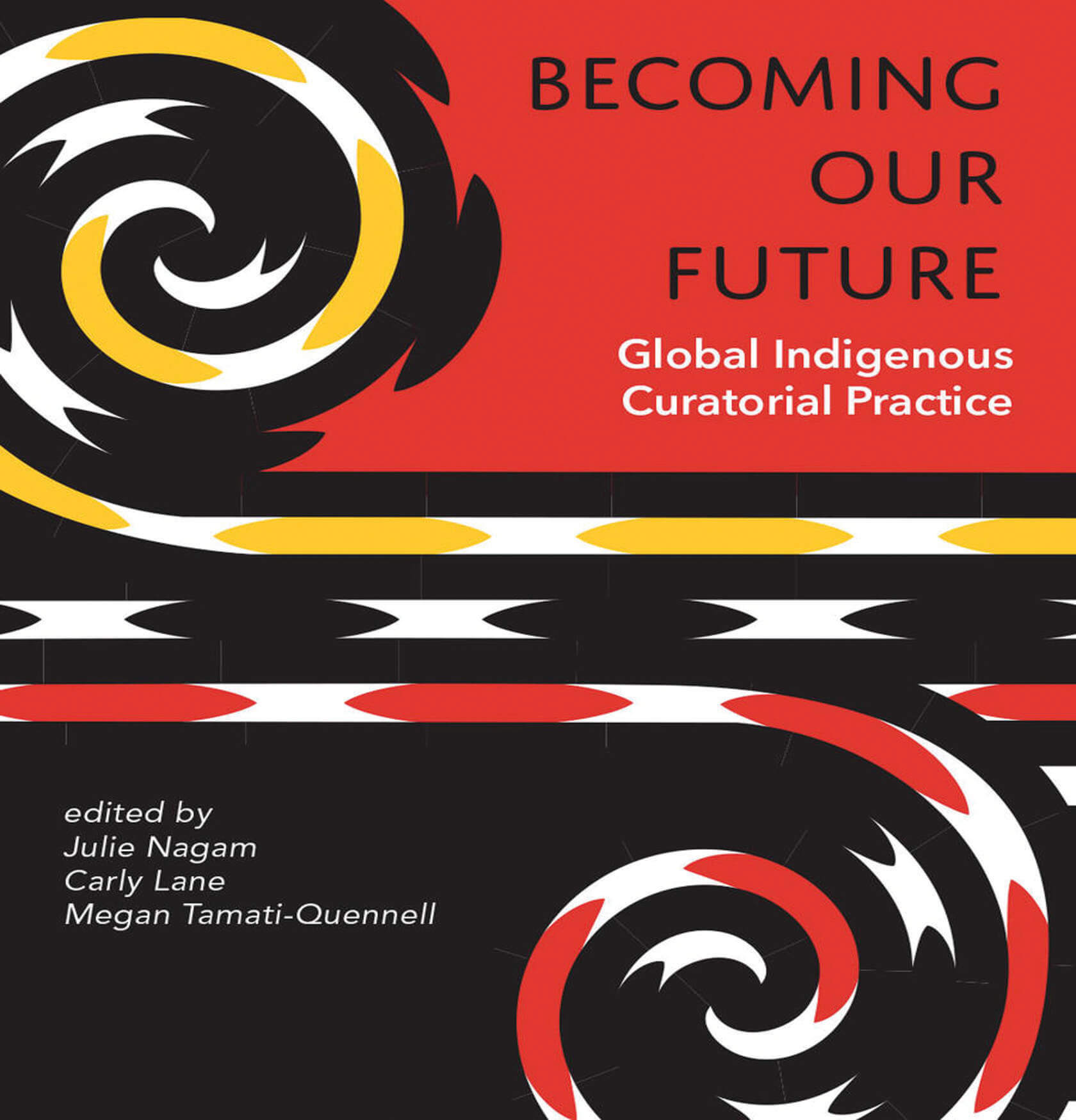
Becoming Our Future: Global Indigenous Curatorial Practice explores how Indigenous visual art and culture operate within and from a structural framework that is unique within the cultural milieu. Through a selection of contributions by Indigenous curators, artists, and scholars brings together perspectives that define curatorial practices, and at the same time postulates Indigenous sovereignty and self-determination within the three countries. These compelling essays begin to unearth the connections and historical moments that draw Indigenous curatorial practices together and the differences that set them apart.
With contributions from Nigel Borell, Freja Carmichael, Karl Chitham, Nici Cumpston, Léuli Eshreghi, Reuben Friend, Jarita Greyeyes, Ioana Gordon-Smith, Dr. Heather Igloliorte, Jaimie Isaac, Carly Lane, Cathy Mattes, Kimberley Moulton, Lisa Myers, Dr. Julie Nagam, Dr. Jolene Rickard, Megan Tamati-Quennell, Josh Tengan, and Daina Warren.
Nagam, Julie and Janine Marchessault, eds. Holding Ground: Nuit Blanche and other Ruptures. Toronto: PUBLIC Books, 2022.

This edited collection brings together historical, contemporary, and future-oriented ways of understanding public art in, and adjacent to, the development of Nuit Blanche in Canada. Personal reflections, dialogues, and projects generate a multiperspectival and cross-cultural sense of this all-night public exhibition, which has spanned numerous Canadian cities and forged countless community relations. In addition, it weaves international voices into the dialogue on public art and public space. With contributions by Hiba Abdallah, Karen Alexander, Fern Bayer, Honoure Black and Niigaanwewidam James Sinclair, Carole Boughannam, Karl Chitham, Sara Diamond, Alyssa Fearon, Peggy Gale, GLAM Collective (Heather Igloliorte, Julie Nagam, Carla Taunton), Édouard Glissant and Hans Ulrich Obrist, Jenn Goodwin, Maria Hupfield, Umbereen Inayet, Serena Keshavjee, Justin Langlois, Janine Marchessault, Denise Markonish, Ashley McKenzie-Barnes, bpNichol, Leah Sandals, Haema Sivanesan, Synonym Art Consultation (Chloe Chafe and Andrew Eastman), and Jean-Philippe Uzel.
Ostrowska, Dorota and Tamara Falicov, eds. Shaping Film Festivals In a Changing World: Practice and Methods. Amsterdam: Amsterdam University Press, 2025.
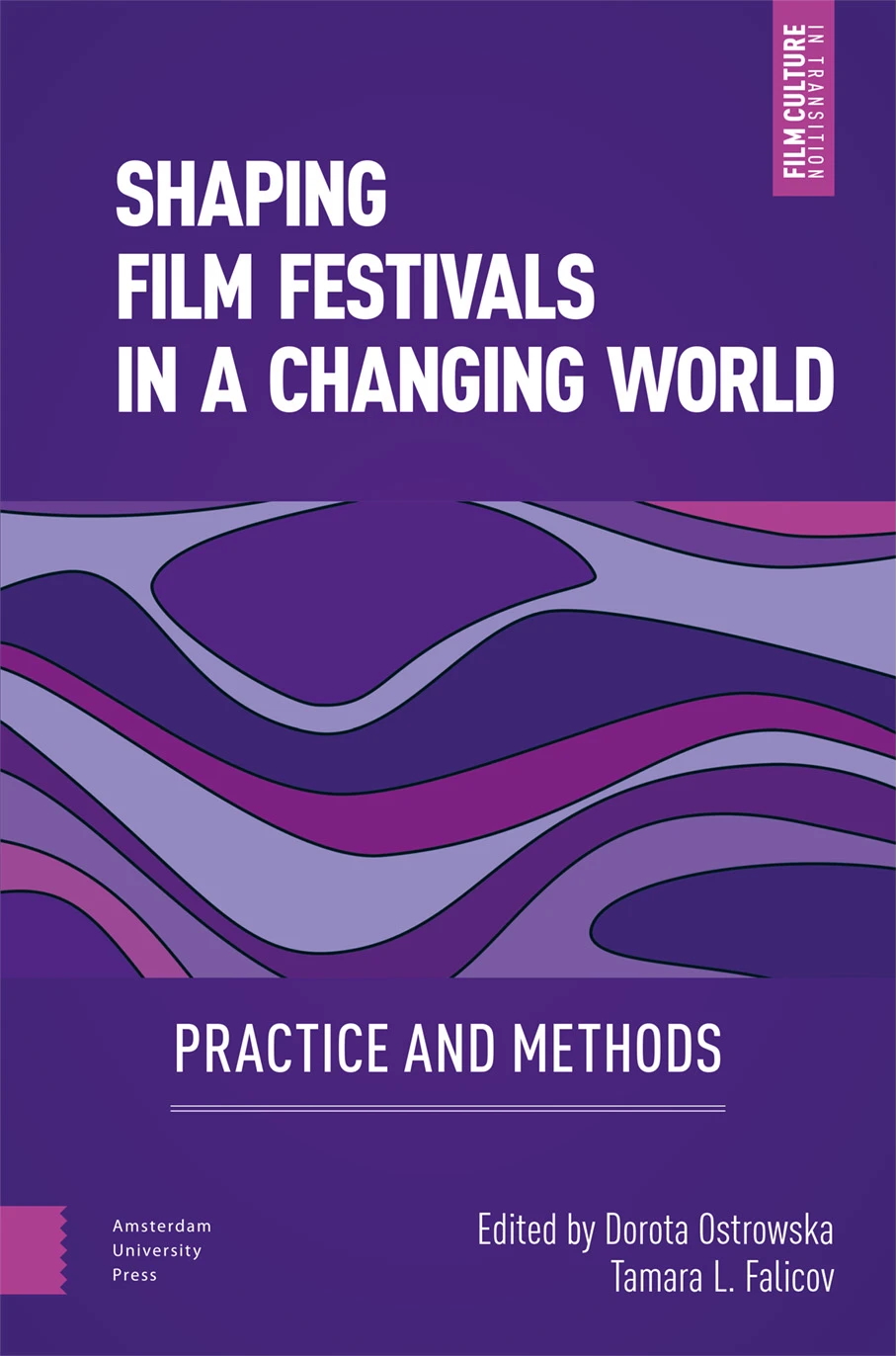
The edited volume Shaping Film Festivals in a Changing World is a collective attempt on the part of a community of academics, film festival curators, and archivists to come to terms with practical and intellectual challenges of the pandemic and post-pandemic realities affecting cultures of film festivals. The collection draws contours of critical inquiry orienting current film festival research and practice to explore new directions in archiving and decolonizing practices and big data analysis in the post-Covid-19 context and beyond. The four-part study gathers the voices of academics and practitioners who engage in a dialogue to articulate critical areas for both study and practice of film festivals, and identifies conceptual tools to address them: “Archival Turn,” “Decolonizing Film Festival Studies,” “Post-Covid-19 and Film Festival Studies” and “Data Visualization and Film Festival Research and Practice.”
Robinson, Dylan. Hungry Listening: Resonant Theory for Indigenous Sound Studies. Minneapolis: University of Minnesota Press, 2020.

Hungry Listening is the first book to consider listening from both Indigenous and settler colonial perspectives. A critical response to what has been called the “whiteness of sound studies,” Dylan Robinson evaluates how decolonial practices of listening emerge from increasing awareness of our listening positionality. This, he argues, involves identifying habits of settler colonial perception and contending with settler colonialism’s “tin ear” that renders silent the epistemic foundations of Indigenous song as history, law, and medicine.
With case studies on Indigenous participation in classical music, musicals, and popular music, Hungry Listening examines structures of inclusion that reinforce Western musical values. Alongside this inquiry on the unmarked terms of inclusion in performing arts organizations and compositional practice, Hungry Listening offers examples of “doing sovereignty” in Indigenous performance art, museum exhibition, and gatherings that support an Indigenous listening resurgence.
Throughout the book, Robinson shows how decolonial and resurgent forms of listening might be affirmed by writing otherwise about musical experience. Through event scores, dialogic improvisation, and forms of poetic response and refusal, he demands a reorientation toward the act of reading as a way of listening. Indigenous relationships to the life of song are here sustained in writing that finds resonance in the intersubjective experience between listener, sound, and space.
Shedden, Jim & Barbara Sternberg. Moments of Perception: Experimental Film in Canada. Fredericton, NB: Goose Lane Editions, 2021.
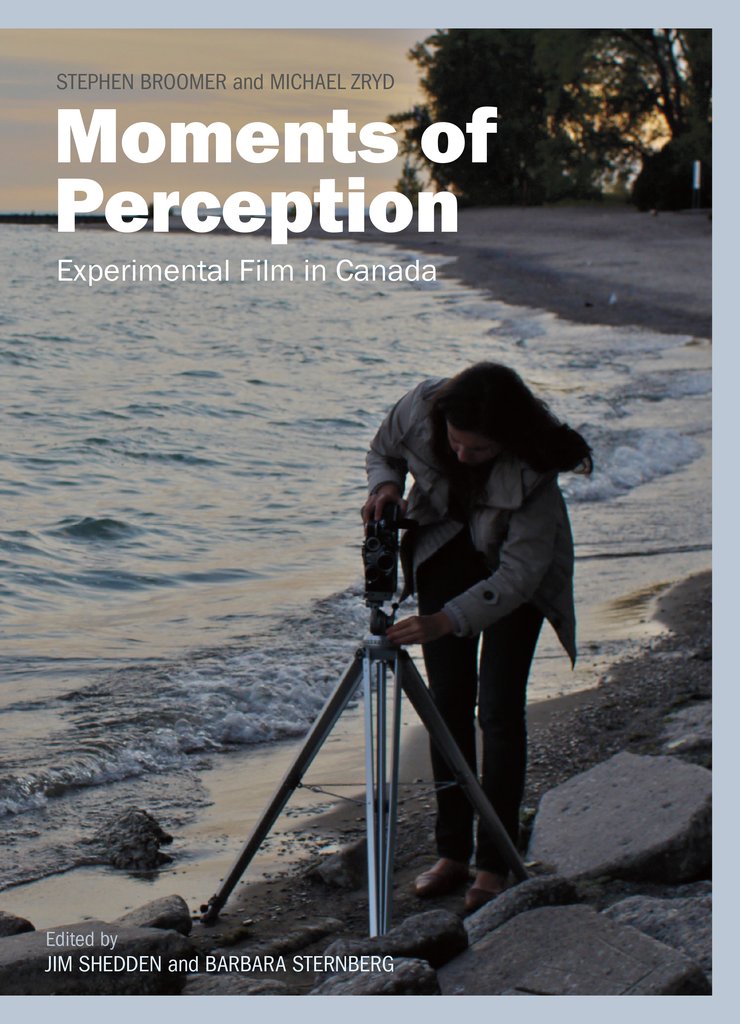
Moments of Perception is a landmark book. The first history of twentieth and early-twenty-first-century Canadian experimental filmmaking, it maps avant-garde film across the country from the 1950s to the present day, including its contradictions and complexities.
Experimental film is political in its very existence, critical of the status quo by definition. In Canada, some of the country’s best-known artists took up the moving image as a form of artistic expression, allowing them to explore explicitly political themes. Mike Hoolboom’s exposure of the horror of AIDS, Josephine Massarella’s concern for the environment, and Joyce Wieland’s satiric look at US patriotism are just a few examples of work that contributed to social movements and provided a means to explore issues of race and gender and 2SLGBTQ+ and Indigenous identities.
Featuring a major essay on the history of the movement by Michael Zryd and profiles of key filmmakers by Stephen Broomer and editors Jim Shedden and Barbara Sternberg, Moments of Perception offers a fresh perspective on the ever-evolving history of Canada’s experimental film and moving image media arts.
Strong-Wilson, Teresa, Ricardo L. Castro, Warren Crichlow, and Amarou Yoder, eds. Curricular and Architectural Encounters with W.G. Sebald: Unsettling Complacency, Reconstructing Subjectivity. Routledge, 2022.
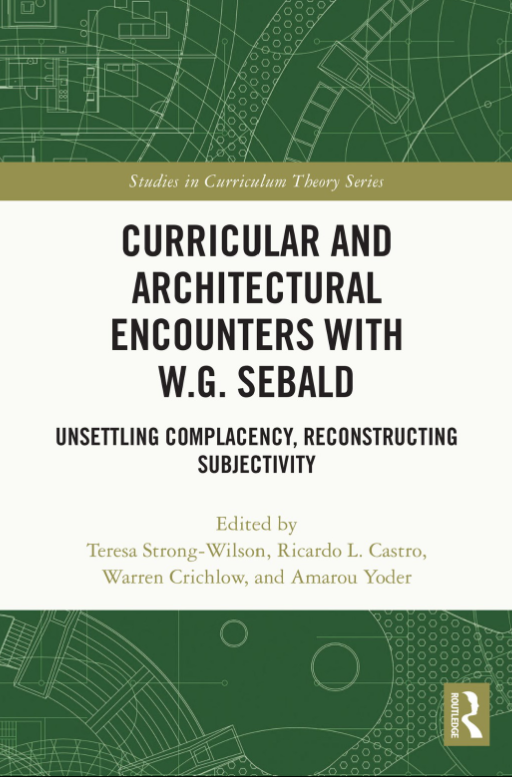
This book engages with the writings of W.G. Sebald, mediated by perspectives drawn from curriculum and architecture, to explore the theme of unsettling complacency and confront difficult knowledge around trauma, discrimination and destruction.
Moving beyond overly instrumentalist and reductive approaches, the authors combine disciplines in a scholarly fashion to encourage readers to stretch their understandings of currere. The chapters exemplify important, timely and complicated conversations centred on ethical response and responsibility, in order to imagine a more just and aesthetically experienced world. In the analysis of BILDUNG as human formation, the book illuminates the pertinent lessons to be learned from the works of Sebald and provokes further investigations into the questions of memory, grief, and limits of language. Through its juxtaposition of curriculum and architecture, and using the prose of Sebald as a prism, the book revitalizes questions about education and ethics, probes the unsettling of complacency, and enables conversation around difficult knowledge and ethical responsibility, as well as offering hope and resolve.
An important intervention in standard approaches to understanding currere, this book provides essential context for scholars and educators with interests in the history of education, curriculum architectural education and practice studies, memory studies, narrative research, Sebaldian studies, and educational philosophy.
Wasson, Haidee. Everyday Movies: Portability and the Transformation of American Culture. Oakland: University of California Press, 2020.
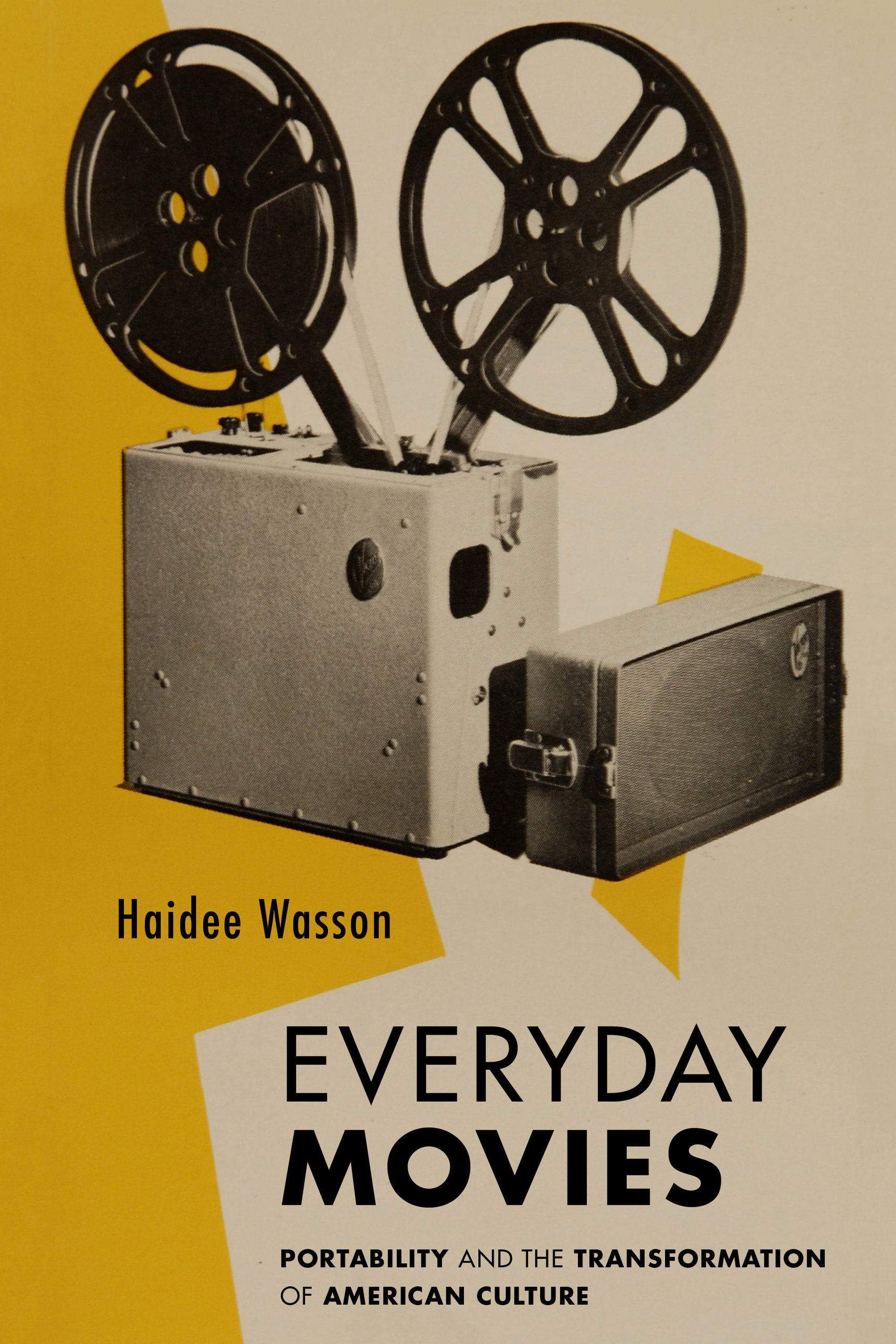
Everyday Movies documents the twentieth-century rise of portable film projectors. It demonstrates that since World War II, the vast majority of movie-watching did not happen in the glow of the large screen but rather took place alongside the glitches, distortions, and clickety-clack of small machines that transformed home, classroom, museum, community, government, industrial, and military venues into sites of moving-image display. Reorienting the history of cinema away from the magic of the movie theater, Haidee Wasson illustrates the remarkable persistence and proliferation of devices that fundamentally rejected the sleek, highly professionalized film show. She foregrounds instead another kind of apparatus, one that was accessible, affordable, adaptable, easy to use, and crucially, programmable. Revealing rich archival discoveries, this book charts a compelling and original history of film that brings to light new technologies and diverse forms of media engagement that continue to shape contemporary life.
VanderBurgh, Jennifer. What Television Remembers: Artifacts and Footprints of TV in Toronto. McGill-Queen's University Press, 2023.
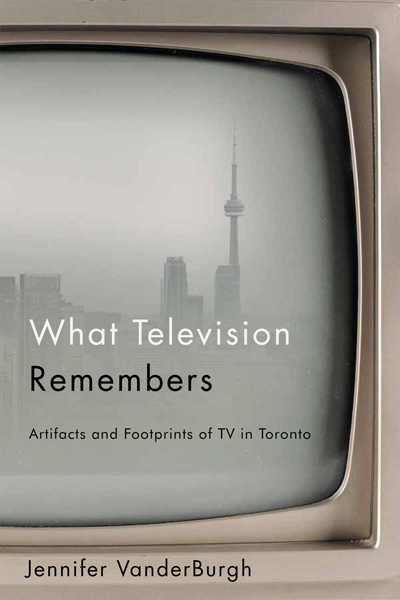
Television in Canada has been undervalued as a cultural form. Despite being publicly funded, Canadian television programs are also notoriously difficult to access once they go off the air, which has compounded the problem.
In What Television Remembers Jennifer VanderBurgh intervenes in the story of the medium in Canada by exploring the long relationship between TV and the city of Toronto. From the first demonstration of television at the Canadian National Exhibition in 1939 and the mass viewing of Queen Elizabeth II’s coronation broadcast in 1953 to the late-century installation of TV screens in public spaces around the city, television has shaped Toronto’s collective imagination and affirmed viewers in their multiple identities as local residents, national citizens, and transnational consumers. In a close reading of Toronto-based CBC dramas from the 1960s to 2010, VanderBurgh explains how the city has functioned as a strategic location in CBC programming, reflecting dramatically changing ideas about Canadian identity, community, and citizenship.
At a time when many are suggesting that the era of television is over, What Television Remembers sounds the alarm that we are in danger of forgetting TV in Canada without appreciating the complexities of its contributions and legacy.
Zryd, Michael. Hollis Frampton: Navigating the Infinite Cinema. Columbia University Press, 2023.

Hollis Frampton was an American filmmaker, photographer, and theorist who bridged the experimental film and contemporary art worlds in the 1960s and 1970s. Best known for avant-garde films including Zorns Lemma (1970) and (nostalgia) (1971), Frampton spent his later years working on the unfinished epic Magellan, a monumental cycle that used the metaphor of Ferdinand Magellan’s circumnavigation of the world to rethink the natures and meanings of history, modernity, and cinema. Frampton’s career was cut short by cancer at age 48, with his vast ambitions for the project left incomplete.
This book is a groundbreaking and comprehensive account of this remarkable figure’s work in its totality, from Frampton’s earliest films through Magellan. Michael Zryd explores the connections linking Frampton’s art and thought to other media forms, histories, and cultural frameworks. He foregrounds Frampton’s notion of the “infinite cinema,” which redefined the parameters of the medium to encompass all forms of moving image and sound media across the past and future of cinematic possibility. Zryd analyzes Frampton’s ambivalent relationship with modernism and the Enlightenment, showing how the artist navigated between attraction to radical artistic investigation and awareness of this tradition’s implication in colonialism and other oppressive power structures. Shedding new light on Frampton’s project of exploring and critiquing how cinema attempts to capture and understand the world, this book also considers his significance for contemporary art.

